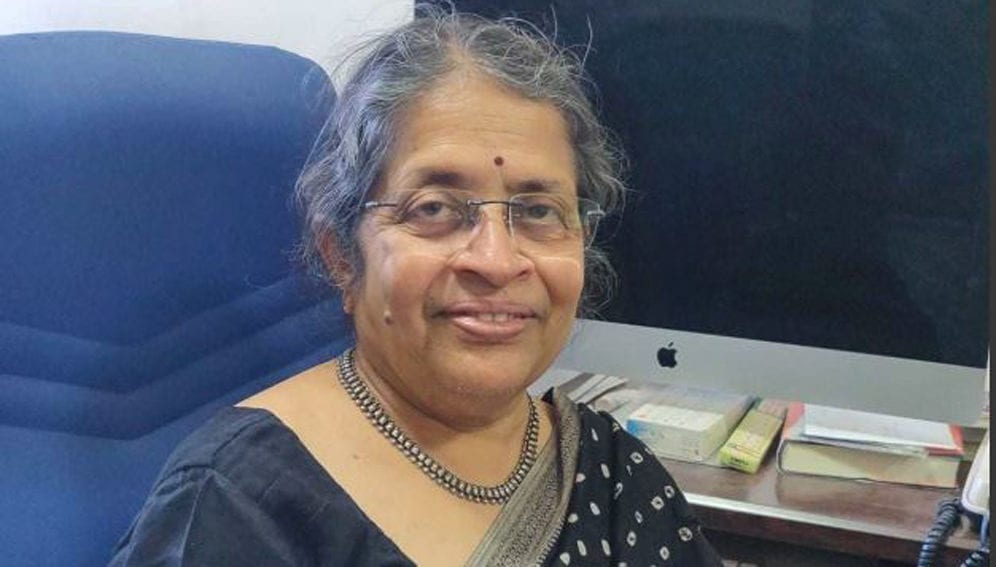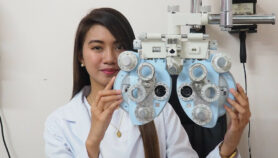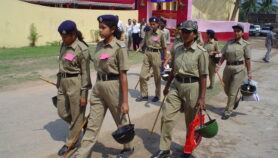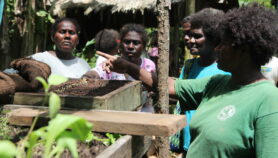Send to a friend
The details you provide on this page will not be used to send unsolicited email, and will not be sold to a 3rd party. See privacy policy.
Rohini Godbole’s theoretical work in searching for hypothetical particles contributed to suggestions made to experimental physicists who, using the Large Hadron Collider (LHC), discovered a particle that was finally confirmed in January 2013 as the Higgs boson.
Also called the ‘God particle,’ the Higgs boson gives mass to all elementary particles such as electrons and neutrons and supports the Standard Model of particle physics, which holds that an invisible energy field pervades the universe. The machine LHC at the Geneva-based CERN is known to be the most powerful particle accelerator in the world.
“We need to increase the number of women in science or we will lose out”
Rohini Godbole, Indian Institute of Science
Godbole is also credited with suggestions to isolate events due to production of the top quark. which was eventually discovered through experimental work in 1995. In the rarefied world of frontline particle physics, theoretical physicists and experimental physicists work closely together.
Currently professor at the Centre for High Energy Physics, Indian Institute of Science, Bangalore, Godbole focuses on the Standard Model, quarks and high energy collisions. She is interested in understanding the absence of antimatter and the presence of dark matter quantitatively, and in learning concepts beyond the Standard Model.
Godbole was on the panel of the International Detector Advisory Group for the International Linear Collider and is now a member of the Linear Collider Board. This year, she was awarded the Padma Shri, one of India’s highest civilian honours, for her contribution to physics.
Additionally, Godbole is advocating for more women scientists to stay their course and make their mark in a largely male-dominated industry. After all, her work as a celebrated physicist and professor has changed the landscape of theoretical physics and experimental physics forever.
Papiya Bhattacharya spoke with Godbole on her work and life.
You have been credited with identifying events in 1984 that predicted the existence of the top quark, which was eventually discovered in 1995. Please narrate how that transpired.
Quarks are elementary particles making up the protons and neutrons in a nucleus which make up atoms. Theory says we must have an even number of quarks. Initially, three quarks had been identified — ‘up,’ ‘down’ and ‘strange’. Then a fourth quark called ‘charm’ was predicted after which, yet another, called ‘bottom’ was predicted.
In 1984, I was [doing my postdoctoral studies]. [My colleagues and I] figured out what might be the best strategy to look for a top quark which is a partner of the [already discovered] bottom quark (remember, they are in pairs). I was involved in identifying events that would lead to the production of a new quark called top. It is like looking for a needle in a haystack as a billion collisions would probably be needed to produce around ten top quarks. I just tried painting the needle bright blue so that it was a tad easier to find.
It was actually found in 1995, and I am proud to have been a small part of the quark story.
Collider physicists, such as I, work closely with experimental physicists in order to build colliders in labs such as CERN with correct specifications to answer more questions in the area.
You were one of the ten panel members of the International Detector Advisory Group for the International Linear Collider in the CERN Lab in Switzerland. What is your role in the panel?
The International Advisory Group discusses the properties of the collider that is being constructed. My role as a theoretical physicist is to work with the collider builders and detector builders.
Working on how high-energy photons interact with each other from 1988, I found strange happenings. The photon splits into a quark and an anti quark pair which join again. This creates a cloud around it in a collider and at high energy, this cloud creates an interfering background for colliders. As they are built to study these particle interactions, the interference will be a distraction.
The first collider was built in 1962. At CERN, we would like to build an E+E- collider of higher energy than the earlier colliders but with a lower energy than the existing LHC. The design must not produce high-energy photons because of the cloud.
How has your work in particle physics evolved over the last 40 years?
I studied quantum mechanics as a subject at the Indian Institute of Technology-Bombay and wanted to study particle physics when I graduated. I began my PhD research in 1974 in the State University of New York, Stony Brook.
Around the same time, a laboratory in Brook Haven discovered a particle called J/Psi.
Particle physics began in 1962 and became exciting around this time as the Standard Model for Gauge Theory of Particle Interactions came into being. It was a heady atmosphere and we all were working on the Gauge Theory which was the theoretical basis of particle physics.
In the last 40 years of my life as a theoretical physicist, various aspects of the theory were gradually proved bit by bit just as the discovery of the gravitational wave by the Laser Interferometer Gravitational-wave Observatory (LIGO) group proved Einstein’s theory. With the discovery of the Higgs boson, the entire theory was proved.
One of my first papers was on ways of producing the Higgs boson in a series of collisions. In 2012, the Higgs boson was found. I was at CERN on that day to [give a] lecture on the Standard Model.
What is the focus of your work now?
My work continues on Beyond the Standard Model, such as, where did antimatter go when the universe was created? If an atom has a nucleus which contains a positive charge in the form of a proton with a negatively charged electron revolving around it, its counterpart would be a nucleus with a negatively charged centre with a positron revolving around it. That is antimatter. Another question is what is dark matter? We don’t understand these questions quantitatively, yet.
In which areas can particle physics be applied?
The Internet is a spin-off from particle physics. Internet started in CERN as people wanted to exchange data. Computation has led to grid and cloud computation. Big data is derived from particle physics and has led to machine learning. In high-precision experiments involving the collider, the technology needs of particle physics lead to making new devices, extremely sensitive sensors, etc.
You have always been concerned about women in science. Your surveys on why women opt out of a career in science found that only 25 per cent leave for family reasons. You co-edited ‘Lilavati's Daughters,’ a collection of biographical essays on women scientists in India. Has the situation changed?
Now there is better awareness. We need to increase the number of women in science or we will lose out. This is the perception at the world level. A recent American study says that a diverse set of inputs increases efficiency in some tasks.
Data suggests that about 20 per cent of women students get a doctorate in science in India. However, at the faculty level, this ratio drops alarmingly to less than 10 per cent in elite institutions like the Indian Institutes of Technology and the Indian Institute of Science. I would like the ratio to be constant, at least.
We have schemes for women to come back to science after a break. But instead of being completely women-centric, we can have general schemes where gender sensitivity is a subtext. Women must be given a level playing field to prove themselves. For example, the two-year parental leave scheme by the [Indian] government is a good plan but must be gender neutral.
Age limits could be relaxed in some cases [so that] the times when a woman starts a family and when she would like to establish a career in science do coincide. We can learn from the Athena SWAN Charter (managed by the UK) about how to make the participation of women more effective.
Monash University in Australia requires every student to fill [up] questionnaires to check gender sensitivity. This will help to check a gender bias that may exist in people’s minds.
What is the state of Indian science today? With a population of more than a billion people, shouldn’t the nation be doing better?I certainly think we are world-class in the areas of particle physics and mathematics. Good science is now a collaboration not limited to one country as seen in astrophysics, genome projects, etc. There is a global scientific community; we must be able to pull our weight on it. India participating in LIGO is a good example. Our scientists are invited to talk about their work and are respected. We are good with computational skills and big data analysis.
I do agree that scientific temper in basic research is low and that we must spend more on science. The need for human resource for experiments in LIGO and the Neutrino Observatory in India can be fulfilled by science students with a research background from the universities and Indian institutes for science education and research. Where there is promise, money needs to be put in.
This piece was produced by SciDev.Net’s Asia & Pacific desk.














